Rumors of hefty quantities of gold brought Ponce de Leon back, in 1508, where he found an islet with an excellent harbor he named Puerto Rico, or Rich Port. This would become the name of the island, while the town was renamed San Juan. He didn’t find gold, but was named first governor of the new territory, and when he heard stories from Taino Indians about a magical fountain whose waters would rejuvenate those who drank from it, he decided he would seek immortality. Can we fault him?
Today, locals claim the mineral-rich waters at Coamo, about 10 miles east of Ponce in the south of Puerto Rico, are in fact the Fountain of Youth Ponce de Leon sought, though perhaps he didn’t soak long enough, as an arrow squelched his eternity in 1521. But that the belief of the fountain’s powers still exist is evident in its current pricing. Anyone over 65 is free, the theory being, I suppose, that if the wayback waters work, the free-soaking seniors will soon be back as paying customers.
There is something persistently youthful about Puerto Rico. It’s not just that 30% of the population is under 25, but rather its potion of nutrient-rich volcanic soil, crisp, clean water, its perpetual June, its healthy outdoor activities, its food, art, and its spirit of dance and celebration that make almost everyone who comes here feel happy and young.
Recovering from a surgery a few weeks back, I find myself feeling a bit broken by time’s wheel, a little superannuated in a sharp winter, when I speak with my friend John Jessey, who offers up an antidote. “Go to Puerto Rico. You’ll feel ten years younger.”
Rather than slouching towards oblivion, or doing a deal with the devil, John’s recommendation seems the enchanting choice, so I book a ticket from Los Angeles for a week-long soak, with my family, including 6-year-old Jasper, and our friends Didrik Johnck and Lisa Niver. We leave passports behind, because Puerto Rico is an unincorporated territory of the United States, a sort of grey-area status where it is not officially a State, but Puerto Ricans enjoy all the benefits of citizenship, save one: Puerto Ricans who live in Puerto Rico cannot vote for the U.S. President in the general elections. And, the currency is the U.S. dollar, which saves all those calculations, and exchange fees that usually end up on post-trip credit card statements. And you can drink the water.
I’m a sucker for touching history, and sought to book the Caribe Hilton Hotel, for its storied past, but it was full, so instead we make way to its sister, the Condado Plaza Hilton, just seven miles from the Luis Muñoz Marín International Airport. I take a room overlooking the aquamarine Atlantic, and with a view of the Caribe Hilton Hotel. It was Hilton’s first hotel outside the continental United States and made Hilton the first international hotel company. It was the first in Puerto Rico to offer radios in every room and individually controlled air conditioners, and claims to be the birthplace of the Piña Colada. In 1954, bartender Ramón “Monchito” Marrero spent three months creating a medley of rum, coconut cream, and pineapple juice, which launched a Noah’s flood of tropical refreshment, and at least one catchy song. To celebrate, I order one up in the lobby bar. Maybe two. Or four. To be honest, I can’t remember, except that they were yummy.
The next day, in the first blush of pink light, we translate to the Wyndham Grand Rio Mar Beach Resort, to the east, to play a little golf. Golf here dates to 1958, when Laurance Rockefeller, a pioneer in barefoot elegance, built a resort in Dorado and hired Robert Trent Jones to design its fabled East Course. Now Puerto Rico has 23 courses designed by legendary golf pros, and Rio Mar has two, the Ocean Course, by Tom and George Fazio, and the River course, by Greg Norman, both 18 holes. It’s on the 16th hole of the Ocean Course I meet Jesus Rodriguez, younger brother to Chi-Chi, who is the groundskeeper and resident merry prankster. He shows us how to putt a coconut, and mimics the famous victory dance of his legendary brother. And he offers to arrange a meeting with his brother, over at the St. Regis Bahia Beach Resort & Golf Club, with its 18 holes by Robert Trent Jones, Jr., set along two miles of private beach, a former coconut plantation.
I meet Chi Chi on the lushly manicured lawn beyond the lobby, and he looks dashing in a fierce blue jacket, yellow tie and signature Panama hat. His eyes are quiet as a pond; his grin electric. He’s 78-years-old, but has the spark and energy of someone half his age, yet another testament to the youthful stylings of Puerto Rico.
Chi Chi says he was born into a dirt poor family, one of six siblings. They struggled to put food on the table. When he was seven, he worked as a water carrier on a sugar plantation. One day he wandered onto a golf course. When he learned the caddies were earning more money than he, he decided to switch careers.
Chi Chi would take a branch from a guava tree and turn it into a golf club. Using a metal can as a “golf ball” he would practice what he had seen “real” golfers do. By the time he was 12 he scored a 67. He went on to trophy scores of tournaments, including 22 wins on Senior PGA Tours, and became the first Puerto Rican inducted into the World Golf Hall of Fame.
After mahi mahi tacos with Chi Chi at Seagrapes it’s time to undo time, so we head back to the Wyndham, where we take a jungle walk on the grounds, and end up at the estuary of the Mameyes River, where paddle boards and kayaks await. We scull about, among the mangroves for a sweet hour or so, and then walk the beach back to the pools for a mojito (this island is, after all, the largest producer of rum in the world) before thinking about dinner.
The sky lightens slowly the next morning, and time pours like treacle as we linger through breakfast. Afterwards, we travel just a short ways to the earthy embrace of El Yunque, the only tropical rain forest in the US National Forest System. The air seems to be made of a different and more fragrant substance than at home. Everything is pungent and moist. This is where the wrinkles wash away, with over 200 inches of rain a year. We set off on a short hike through a tangle of trees that look as though they awoke in the middle of the night and didn’t have time to fix their hair. We pass orchids, giant tree ferns, oversized snails, gushing waterfalls, all the while cupping ears to the two-note chanting of coquí tree frogs, and the squawks of unseen parrots.
We next head over to the small town of Fajardo and the mega resort El Conquistador (a Waldorf Astoria property), which mostly sprawls atop a 300-foot-high cliff overlooking the Atlantic. It takes a tall pile of words to convey this 500-acre retreat. A tram trundles down to a marina and the 2.4-acre Coqui Water Park, a font of wading pools, slides and water rides, a jungle-type rope bridge, and a lazy river where Jasper and I grab a tube and float and splash and cachinnate for an hour. If ever a kid’s paradise, this seems it, for children from two to a hundred and two.
As the evening tips over into darkness we leave Jasper, exhausted and sound asleep in the Wyndham, and head into the city, which puffs up like a sail with its nightlife. We hit a few bars, boîtes and clubs, where the reggaetón and salsa swirl around us in a fluid ribbon. The outfits on parade are meant to make eyeballs explode, tropical tornados of cadmium and cobalt, magenta and marigold…the full rainbow of humanity struts here.
Puerto Rico is a kind of crossroads of the Caribbean. Its forts, castles, walls and batteries were originally designed to protect the island from invaders, but when the residents felt secure, it became a way station for seafarers bringing new ideas, art, lifestyles and food. It was a place to share experiences, and embrace diversity. And tolerance was the mortar that held it together. Today it is an island of hospitality, safety and open-mindedness. And one vivid indicator of this is the vibrant LGBT scene.
We meet Mr. Gay World Puerto Rico, Juan Ortiz, visiting from New York, who shares how Puerto Rico has such open arms and opportunities for all lifestyles. We meet a few lesbians who agree, and even a gay couple from New York on the eve of nuptials, which have been elaborately designed by one of the top wedding planners in one of the best hotels.
In the bath of morning sunlight, before pointing the needle of curiosity to the west, I step through the heavy wooden door of one the many specialty coffee shops, and order up a cup of arabigo Pomarrosa. What a brew! All other coffees drip with envy. I ask its origin, and am told it is from a small farm in the middle mountains of Puerto Rico, in the shadow of the island’s highest peak, Cerro de Punta, some 4,357 feet above sea level. I vow to find this place.
But first we set out for the far coast, the surfing, kite-boarding and watersports capital of the island. It’s a stunning drive through the folded complexities of the island, through tropical parklands and by wild seascapes, through towns humming with optimism, past the dance of life that is Puerto Rico. Come late afternoon we pull into the Royal Isabela, a sprawling resort and golf course at the edge of a 300’-high bluff overseeing the crashing Atlantic, looking more like a link course at the edge of Ireland than a tropical fairway.
Here we meet Charlito Pasarell, co-founder of the resort along with brother Stanley, who bounds over to meets us by the clay tennis courts. Charlito was the No. 1 ranked men’s singles tennis player in the United States in 1967, and was last year inducted into the International Tennis Hall of Fame. He practically gleams with a ruddy vitality and mental crackle that belies his 70 years.
Charlito gives us a grand tour on a golf cart, rolling by native grasses, sod-faced bunkers, and wind-twisted trees. He says he discovered this stretch of rugged coastline while overpassing on a helicopter in 1989, and envisioned creating “the Pebble Beach of the Caribbean.” He set about buying the land, piece by parcel, until he patched together some 1,800 acres. Every aspect of Royal Isabela’s design has evolved out of the land itself, and he has gone to great lengths to protect the existing contours, natural features and native flora and fauna along the way. Conventional rules of golf architecture did not apply. Even the 20 freestanding luxury casitas, terraced into a hillside, blend in. They are around here somewhere, he assures.
Charlito takes us to an overlook at the 12th hole, and points out a prominent rock that juts from the steep cliff below. It’s the profile of a Taino Indian warrior, he says, though its well-defined angularity is softened by the afternoon light. As Charlito traces the features with his hand, the aspects come into focus, unbroken and ageless, as though forever dipped in the fountain of youth. Below is the hurtling seam where water bashes stone, and to the side a long stretch of native dunes, and beyond the white lined surf where Humpback whales are fleeting by.
He also shares that he and his brother own a river plantation just across the road with organic farms that produce food for the restaurant and staff. It also has facilities for hiking, mountain biking and horseback riding, with a network of paths and converted rail trails, plus stand-up paddle boarding and other water sports on the Guajataca River, all conspiring to keep guests fit and young.
We dine that night with Charlito at an outside table at The Restaurant at La Casa, on a patio that wafts with the fragrance of the nearby higuerillo trees. Over fine wine and something called “airline” chicken (not because it comes from United or American, but because the breast comes with a drumette attached and protruding, which could be described as looking similar to the tail of a plane). Charlito seasons the plate with tales of his great grandfather, Dr. Manuel Zeno Gandía, who published the first novel by a Puerto Rican author in 1894, and was an early champion for Puerto Rico independence. So, Charlito’s blood mixes literature, politics, sports and recreation, a concoction that seems to be a drink well-served in Puerto Rico.
It’s dark when we finally bid goodbye…one of the consequences of the locavore and slow food movements is a deep-into-the-night dinner…and we hit the road to our next stop, the town of Guánica on the south side of Puerto Rico. It’s midnight when we pull into the Copamarina Beach Resort, and with a welcoming chorus of coquí frogs we make our way down salty paths to our rooms and collapse.
A honeyed light gushes in when I open the shutters next morning, and for a second I have to shield my eyes. Just beyond a powdery beach the deep blue Caribbean laps, a graceful swooshing sound mixed with the sounds of children skylarking. Ponce de Leon first landed near here, and it’s easy to see why he stayed. This is a place that slows down the thoughts, and perhaps the aging process. It’s a popular place for destination weddings (as are most of the resorts in Puerto Rico), and we bump into a handsome couple from Ohio, where it is nine degrees and snowing, who just tied the knot here, and are over the moon about the experience, and the grouper mofongo at the café.
Lisa, who has dived all over the world, but never Puerto Rico, decides to head out and plumb The Wall, a cliff of coral some 22-miles-long dropping down to a depth of over 1 500 feet, with a local firm, Aqua Adventure. I decide to go and hike the nearby Guánica Dry Forest, a UNESCO Biosphere Reserve and State Forest, and considered to be the best example of subtropical dry forest in the Caribbean. How could this island harbor so much diversity? A couple of enormous days ago we were wading through the theatrical vegetation of El Yunque, and now we’re in a desert festooned with Spanish dildo cacti, natural Bonsais, and tangles of scrub and vines glowing in the long tapers of sunlight. It’s not that dissimilar, though, to how the Sierras split California, with fertile valleys on the western side, and desert in the eastern rain shadow. Here the Cordillera Central is the Sierra Madre.
We gather again for dinner, and compare notes over plates of mofongo stuffed with grouper in garlic and lemon sauce. Lisa, the jaded diver, is all sparkle and grins, describing the reefs, the brain coral, the caves, the green moray eel, the angel fish, the porcupine fish, the lobster, the reef sharks, and the sea turtle named Lola, and all else that brushed past her in the 100’ dive. “I’ve dived in six continents. This was the best dive ever,” she blurts.
We decide to divide for the next day as well…Lisa will check out the Fountain of Youth (not that she needs it…she has more energy than a nuclear power plant), and split the wind at the highest and second-longest zip-line on earth at Toro Verde Nature Adventure; the family and I will visit Puerto Rico’s second-largest city, Ponce. Founded in the late 17th century, the city experienced a commercial boom in the 19th century, then declined so quickly no one had time to tear anything down. The center of town is crowded with wedding-cake colonial mansions, strutting with balconies, balustrades, and bas-relief. Then there is the whimsical Arabesque confection, the Parque de Bombas, a bright, red-and-black striped wooden firehouse, amidst the neoclassical and Spanish-style buildings. It is the most attention-grabbing site in Ponce, and maybe all of Puerto Rico, and where, on the Plaza las Delicias, we decide to picnic and gawk.
After Ponce we wind into the mountains to the recondite Hacienda Pomarrosa, where the unspeakably good coffee I had in San Juan is produced.
Stepping from the car the air is so fresh it makes me dizzy for a moment. We meet up with proprietors Kurt Legner and his son Sebastian in the tiny tasting room, where Kurt gives a rattling good history of coffee, from Ethiopia to Arabia to 18th century Puerto Rico, when its coffee was the favorite of European courts.
And then Sebastian takes us on a walk through the farm, showing off the healthy plants and the shiny little beans, and the various steps he takes to harvest, clean, and roast the coffee. All of the coffee is processed in small batches. Once the picked beans arrive at the little processing plant, they are peeled by environmentally friendly machinery.
After the coffee is peeled, it rests for about eight hours in a water bath. From there it goes to the hot-air drier (no sun drying here…too much rain). After about 24 hours, the coffee beans are stored in a humidity controlled warehouse for safekeeping. The final stop: back at the tasting room, where a cup of joe for the road fills my head to the brim, like a honeybear, with some sort of transcendence. “Life is beautiful. Coffee makes it even better,” outpours Sebastian.
We all rendezvous at the Best Western Condado Palm, a value hotel (with the largest bedrooms we’ve seen yet) just steps from the beach and walking distance to the trendy shops and restaurants of Condado. At the bar Lisa shows up looking younger and more effervescent than ever, as though years had drained away in a few hours, like water from a punctured container. It is all the result, she offers, of combining zip-lining with her soak at Coamo, a thrilling and effective concoction.
For the final day we make our way to Old San Juan, the 500-year-old Spanish outpost designed to fend off pirates, buccaneers and privateers. They were all looking to pilfer the gold, silver, gems, spices, and furs from Mexico, Central and South America, stashed here for the final trip to Spain. Stepping through the San Juan Gate today is like stepping into a magic glass. It is hard to preoccupy with the concerns of the world once through this gate, for concerns are always about what will happen in the future, and in Old San Juan the future will never come, and the past will never disappear.
This seems a world where everything fits together. I thread through narrow streets cobblestoned with the ballast from early ships. On one side there are thick, outward-sloping walls, dotted with cannon embrasures; and on the other, neat pastel blue, yellow, and pink façades. Street cats curl and uncurl around the doorways. It’s hot in here…the sun seems to reach through my skin to my bones… so we stop at Caleta de las Monjas 9 and have a few limbers¸ frozen fruit cups, that are instant refreshment. Jasper is inspired, and standing at an overlook to the sea, he recites a poem he composed about his experiences in Puerto Rico:
Birds chirp, lizards run
Coconuts roll, fish splash
Crabs skitter, frogs hop
Sometimes, all of them make a band
It’s getting late, and we have to head to the airport, but first I insist we stop at a little shop called Olé, where they sell hand-crafted Panama hats woven from fine-textured paja grass. There are hundreds on display, and I try a score before one seems supreme. Feelings of contentment are woven from fine and unexpected filaments, and there is a joy when I gaze into the mirror. The saleswoman blocks the hat to fit the shape of my head. Then she fastens a customized band around the rim, and snugs the finished product in place. Finally, she steps back, and with a broad grin says, “It makes you look ten years younger.”
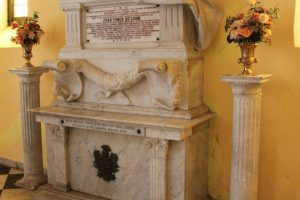
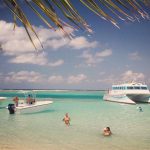
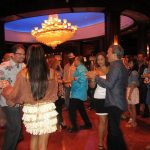
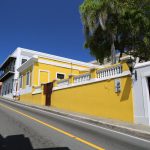
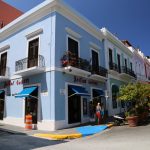
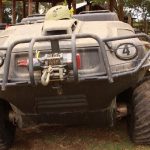
Great article…makes me want to book tickets…and meet all these interesting people.
A very good post. Makes me want to return to Puerto Rico after a long absence when I used to fly the former Eastern Airlines shuttle from JFK/LGA to SJU in the 70’s but I’ll have to check my Sheraton Starwood points. Michael Zullo, NYC